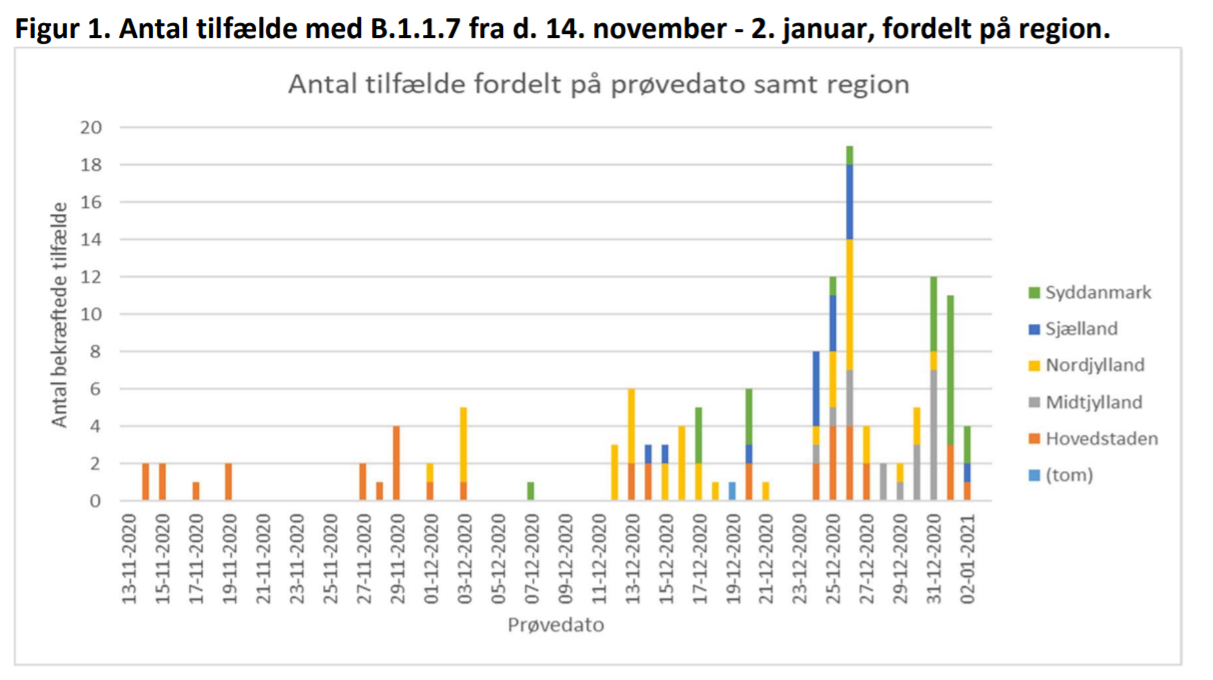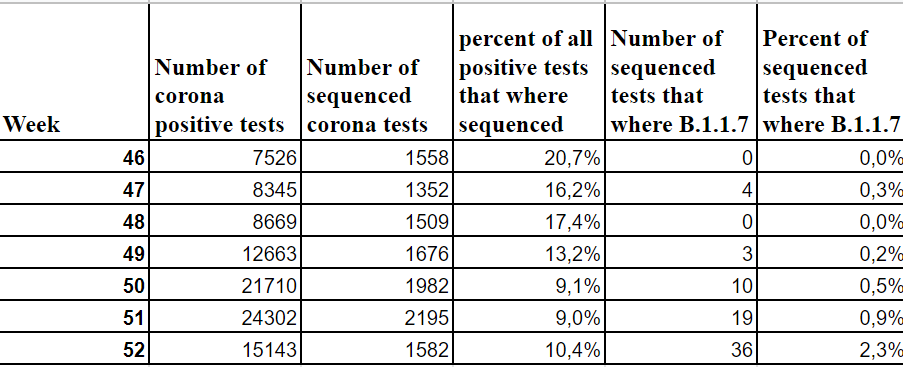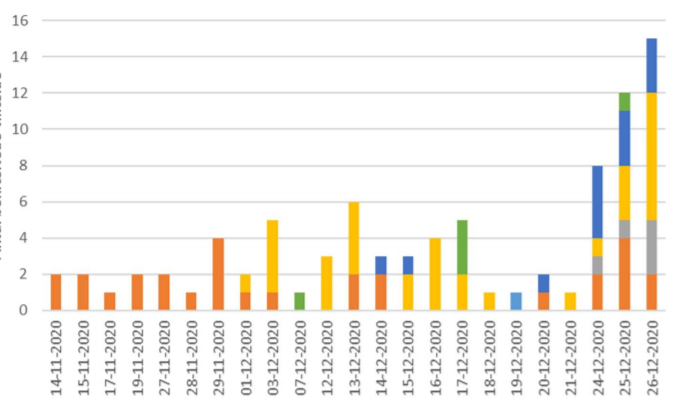Data about the new coronavirus variant (B.1.1.7) from Denmark
2Oskar Mathiasen
1Oskar Mathiasen
1blob
New Comment
Update with new numbers.
In the period from 28-12 to 02-01 we get the following numbers
Positive tests: 14408
sequenced tests: 1261 (8.8%)
B.1.1.7 cases: 36 (2.9%)
Which is slightly slower than a doubleing time of a week (a 1.8 multiplier per week with naive extension (i believe the naive method is likely to underestimate))
Here is the updated graph

on this one days with 0 cases are not excluded
Worth noting that there doesnt seem to be any significant differences in the ages of people who have the new and old variant
Source https://www.ssi.dk/-/media/cdn/files/notat_engelsk_virusvariant090121.pdf?la=da
This follow-up work is also interesting: https://www.ssi.dk/-/media/cdn/files/scenarier_for_udviklingen_i_den_engelske_virusvariant_af_sars-cov-2.pdf?la=da
They use an agent-based model to extrapolate that the UK variant will reach 50% prevalence in Denmark around 40-50 days after Jan 1.
The model does not account for control loop effects or vaccinations. It says that absent these and with the usual assumptions, Denmark would see a strong peak after 90 days where around 1.4% of the country would be infected at the same time, followed by herd-immunity decline to current infection levels after 180 days.
Curated and popular this week

